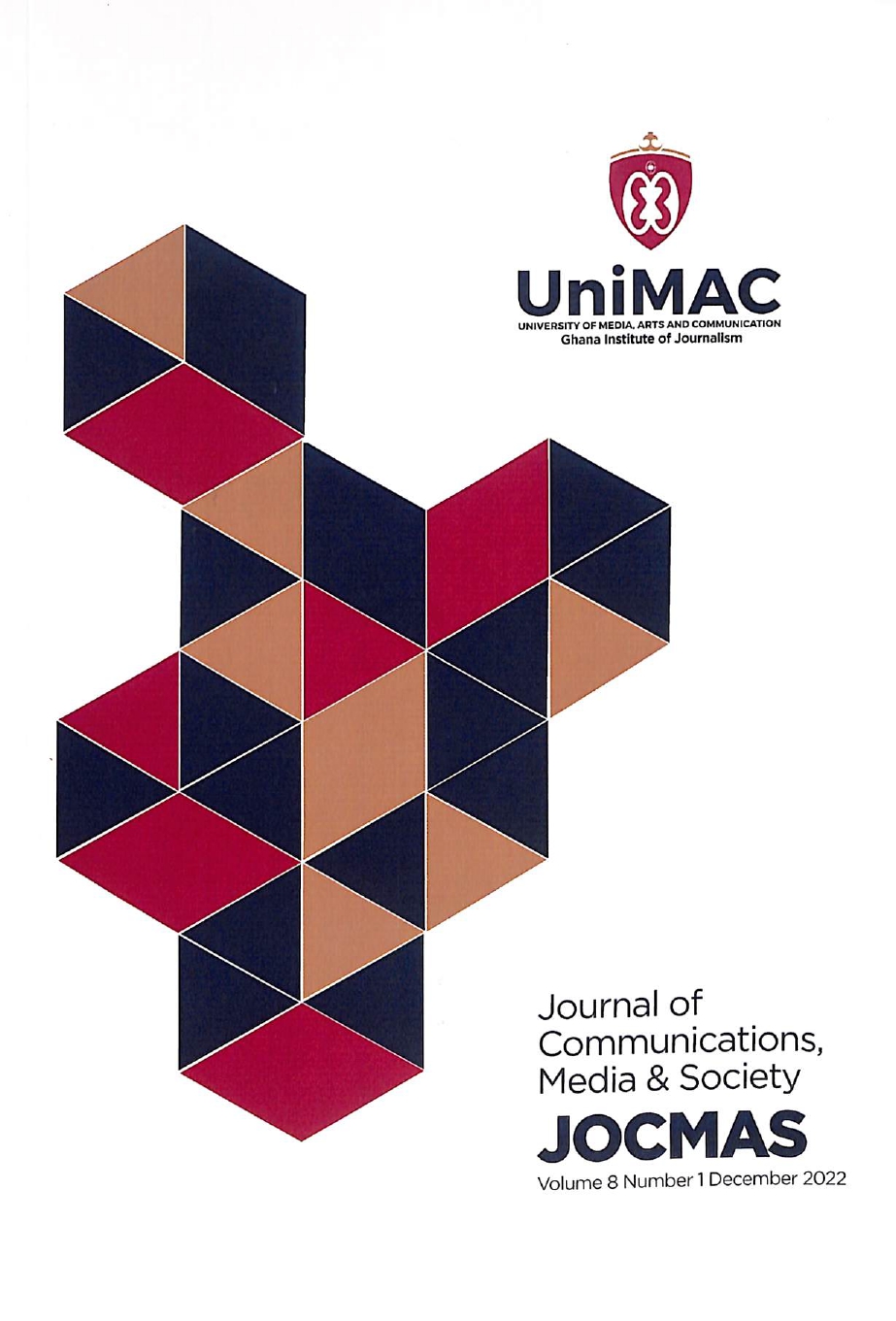The Relationship among Communication, Leadership Behaviour and Performance
DOI:
https://doi.org/10.63772/jocmas.v1n1.1Keywords:
Communication, Leadership, Behaviour, Leadership BehavioursAbstract
The present study explored the relationship among communication, leadership behaviours and performance. It was hypothesised that leader's communication would predict the leader’s exhibition of leadership behaviours and performance. Participants (104 students) were asked to provide communication, leadership behaviour and performance ratings of lecturers within classroom instructional setting. Results indicated that communication was a better predictor of performance and choice of leadership behaviours. The current study provides support in demonstrating the validity and practicability of using communication dimensions as a predictive variable of leadership success. The findings were discussed.
Downloads
Usage Statistics
- Abstract Views: 240
- PDF Downloads: 30
References
Arnold, P., Perry, L., Watson, M., Minatra, K., & Schwartz, R. (2006). The Practitioner. How Successful Principals Lead and Influence. The Connexions Project, Creative Commons Attribution.
Barling, J., Weber, T., & Kelloway, E. K. (1996). Effects of transformational leadership training on attitudinal and financial outcomes: A field experiment. Journal of Applied Psychology, 81, 827–832. DOI: https://doi.org/10.1037//0021-9010.81.6.827
Baum, J. R. (1995). The relation of traits, competencies, motivation, strategy and structure to venture growth. Frontiers of Entrepreneurship Research. Wellesley, MA: Babson College.
Brearley, M. (2000). Teams: Lessons from the world of sport. British Medical Journal, 321(7269), 1141. DOI: https://doi.org/10.1136/bmj.321.7269.1141
Cruz, J. (1995). Effective principals: A superintendent’s perspective. Thrust for Educational Leadership, 24(7), 15–18.
Day, G. (1994). The Capabilities of Market-Driven Organisations. Journal of Marketing, 58(4), 37–49. DOI: https://doi.org/10.1177/002224299405800404
DuFour, R. & Berkey, T. (1995). The Principal as Staff Developer. Journal of Staff Development, 16, 4.
Dulewicz, S. V. (1994). Personal competencies, personality and responsibilities of middle managers. Journal of Competency, 1, 20–29.
Frese, M., Krauss, S. I., & Friedrich, C. (2000). Psychological Action Strategy Characteristics of Business Owners and Success: Results from Three Studies in South Africa, Zambia, and Zimbabwe. Paper presented at Babson College-Kauffman Foundation Entrepreneurship Research Conference, Wellesley, MA.
Fullan, M. (1993). Change Forces: Probing the Depths of Educational Reform. London: The Falmer Press.
Gerstein, M. & Reisman, H. (1983). Strategic selection: Matching executives to business conditions. Sloan Management Review, 24(2), 33–49.
Gil, F., Rico, R., Alcover, C. M., & Barrasa, A. (2005). Change-oriented leadership, performance in work groups: Effects of team climate and group potency. Journal of Managerial Psychology, 20(3/4), 312–328. DOI: https://doi.org/10.1108/02683940510589073
Hadden, J. C. S. (2003). A pilot study of the relationship between competitive athletic participation and transformational leadership ability: A communication perspective. Thesis Presented at Central Connecticut State University.
Hoegl, M. & Gemuenden, H. G. (2001). Teamwork Quality and the Success of Innovative Projects: A Theoretical Concept and Empirical Evidence. Organization Science, 12(4), 435–450. DOI: https://doi.org/10.1287/orsc.12.4.435.10635
Kayworth, T. & Leidner, D. (2002). Leadership Effectiveness in Global Virtual Teams. Journal of Management Information Systems, 18(3), 7–40. DOI: https://doi.org/10.1080/07421222.2002.11045697
Lowe, K. B., Kroeck, K. G., & Sivasubramaniam, N. (1996). Effectiveness correlates of transformational and transactional leadership: A meta-analytic review of the MLQ literature. Leadership Quarterly, 7, 385–425. DOI: https://doi.org/10.1016/S1048-9843(96)90027-2
Madlock, P. E. (2008). The link between leadership style, communicator competence, and employee satisfaction. The Journal of Business Communication. Association for Business Communication. DOI: https://doi.org/10.1177/0021943607309351
Martin, A. (2007). The Changing Nature of Leadership. CCL Research White Paper. Centre for Creative Leadership, North America.
Marzano, R. J., Waters, T., & McNulty, B. A. (2005). School Leadership that Works: From Research to Results. Alexandria, VA: Association for Supervision & Curriculum Development.
McCroskey, J. C., Valencic, K. M., & Richmond, V. P. (2004). Toward a General Model of Instructional Communication. Communication Quarterly, 52(3), 197–210. DOI: https://doi.org/10.1080/01463370409370192
McEwan, E. K. (2003). Ten Traits of Highly Effective Principals: From Good to Great Performance. Thousand Oaks, CA: Sage.
Miller, D., & Toulouse, J. (1986). Chief executive personality and corporate strategy and structure in small firms. Management Science, 32(11), 1389–1409. DOI: https://doi.org/10.1287/mnsc.32.11.1389
Neshamba, F. (2001). Growth and transformation among small business in Kenya. Africa Centre for Entrepreneurship and Growth, Nottingham Business School, UK, 1–19.
Pallant, J. (2001). SPSS Survival Guide: A Step-by-step Guide to Data Analysis Using the SPSS. Maryborough, Victoria: McPherson’s Printing Group.
Penley, L. E. & Hawkins, B. (1985). Studying interpersonal communication in organizations: A leadership application. Academy of Management Journal, 28, 309–326. DOI: https://doi.org/10.2307/256203
Peters, L. & Fletcher, K. P. (2004). A market-based approach to understanding communication and teamworking: A multi-disciplinary literature review. Academy of Marketing Science Review, (2004), 02.
Price, J. L. (1997). Handbook of Organizational Measurement. International Journal of Manpower, 18(4/5/6), 305–558. DOI: https://doi.org/10.1108/01437729710182260
Rauch, A., & Frese, M. (2000). Psychological approaches to entrepreneurial success: A general model and an overview of findings. In C. L. Cooper & I. T. Robertson (Eds.), International Review of Industrial and Organisational Psychology, 15, 101–142. Chichester: Wiley.
Recardo, R. J. (2000). Best practices in organizations experiencing extensive and rapid change. National Productivity Review, Summer, 79. DOI: https://doi.org/10.1002/1520-6734(200022)19:3<79::AID-NPR10>3.0.CO;2-X
Shay, J. P., Tracey, J. B., & Peterson, S. (2001). The generalisability of managerial practices across cross-cultural contexts. Journal of International Management, (In Press).
Shin, Y. K. (1998). The traits and leadership styles of CEOs in Korean companies. International Studies of Management and Organization, 28(4), 40. DOI: https://doi.org/10.1080/00208825.1998.11656748
Storey, J. (2001). Human Resource Management: A Critical Text. London: Thomson Learning.
Tabanick, B. G., & Fidell, L. S. (1996). Using Multivariate Statistics (3rd ed.). New York: HarperCollins.
Yuki, G. (1998). An evaluative essay on current conceptions of effective leadership. European Journal of Work and Organisational Psychology, 8, 33–48. DOI: https://doi.org/10.1080/135943299398429
Yuki, G. (2002). Leadership in Organizations (5th Ed.). Upper Saddle River, NJ: Prentice Hall.
Yuki, G., Gordon, A., & Taber, T. (2002). A hierarchical taxonomy of leadership behaviour. Integrating a half-century of behaviour research. Journal of Leadership and Organization Studies. DOI: https://doi.org/10.1177/107179190200900102
Downloads
Published
Issue
Section
License
Copyright (c) 2025 Journal of Communications, Media And Society (JOCMAS)

This work is licensed under a Creative Commons Attribution-NonCommercial-NoDerivatives 4.0 International License.








